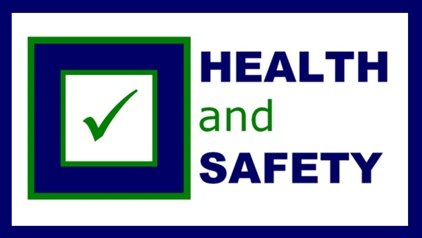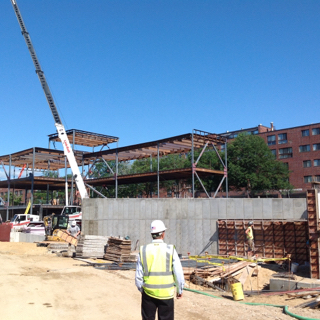Title Page
-
Site conducted
-
Conducted on
-
Prepared by
Untitled Page
1.0 Training Program (Safety / Training Department)
-
Does the facility have an Authorized person training program for those employees who may encounter confined spaces?
-
Does the facility have an awareness level training for all new employees?
-
If the facility relies on training for confined space identification does the training clearly establish the parameters of a confined space?
-
Are authorized employees trained on how to use air monitors before entering and while in a confined space?
-
Are authorized employees trained to identify and evaluate hazards before entering confined spaces?
-
Does the site have a training program for confined space rescue? 1910.146(k)(2)(i) If the site is not permitted to conduct rescues mark N/A.
-
Does the site have contractor training to aprise contractors of the hazards identified within a confined space for which they are entering? 1910.146(c)(8)(ii)
-
Does the site have retraining requirements for employees changing job duties, deviating from training or a change in the confined space classification? 1910.146(g)(1)
2.0 Confined Space Program (Safety / Training Department)
-
Does the facility have a written confined space program and policy? 1910.146(c)(4)
-
Does the facility have air monitors to sample the atmosphere prior to entering the confined space? 1910.146(c)(5)(ii)©
-
Has the site developed a written confined space permit designed to aid in hazard identification and elimination? 1910.146(d)(5)
-
Has the site developed a written confined space reclassification permit that will aid the authorized employees in reclassifying a permit space? 1910.146(d)(10)
-
Are the roles of all persons actively involved in a confined space adequately defined? 1910.146(d)(8)
-
Does the site have procedures for summoning rescue and emergency services? 1910.146(d)(9)
-
Do rescue procedures enable rescue services to be at the location of the entry in a "timely manner" based on hazard identification? 1910.146(d)(7)
-
Does the site have procedures for confined spaces that contain conditions that are Immediately Dangerous to Life and Health (IDLH)? 1910.146(k)(1)(i)
-
Does the site have procedures (such as closing off a permit space and canceling the permit) necessary for concluding the entry after entry operations have been completed? 1910.146(d)(12)
-
Does the program contain duties of authorized entrants? 1910.146(h)
-
Does the program contain duties of attendants? 1910.146(i)
-
Does the program contain training for entry supervisors who can identify predictive hazards and has the authority to remediate identified hazards? 1910.146(j)
-
Does the site ensure permit rescue trainings are conducted at least once every 12 months? 1910.146(k)(2)(iv)
3.0 Equipment and Permit Specifications (Visual Inspection)
-
Does the facility provide signs or other equally effective consistent means to identify confined spaces? This may include training. 1910.146(c)(2)
-
Does the confined space permit contain all necessary items as defined in 1910.146(f)?
-
Is all necessary rescue and ventilation equipment on site and ready to use before entry is made? 1910.146(d)(4)(ii)
-
Does the site have retrieval systems for permit confined space rescue? 1910.146(d)(4)(viii)
-
Does the site have full body harnesses or chest harnesses for use with a retrieval system? 1910.146(d)(4)(viii)
-
Does the site provide communications equipment necessary for compliance? 1910.146(d)(4)(iii)
-
Are air monitors calibrated according to manufacturer recommendations?
4.0 Procedures and Employee Behavior (Observation and Questioning)
-
Do employees test the atmosphere prior to making entry into the space? 1910.146(d)(5)(i)
-
Do employees continuously monitor and re-evaluate the air quality as needed?
-
Do all entrants know the hazards of the confined space they are entering? 1910.146(h)(1)
-
Do all entrants understand their duties and perform them correctly? 1910.146(h)
-
Do all attendants understand their duties and perform them correctly? 1910.146(i)
-
Does the entry supervisor understand their duties and perform them correctly? 1910.146(j)
-
Are any other PPE and safety equipment onsite and ready to use prior to making entry? 1910.146(d)(4)
-
Is an attendant at the location outside of the confined space provided continuous monitoring for entrants?
-
Do employees know their right to stop any operations that they believe may not protect entrants? 1910.146(d)(13)
-
Does the confined space entry supervisor sign the confined space prior to space being entered? 1910.146(e)(2)
-
Do attendants and entrants feel as though their training was adequate for the hazards for the current confined space? 1910.146(g)
-
Do entrants and attendants have a clear form of communication and communicate as necessary? 1910.146(h)
-
Are all attendants, entrants and the entry supervisor identified prior to filling out permits and prior to entry?
-
Do employees post the confined space permit at the point of entry into the confined space? 1910.146(e)(3)
5.0 Documentation and Retention (Safety/Medical)
-
Is a confined space permit or reclassification completed by a competent person? This person must be trained to identify and remediate hazards.
-
Does the site maintain each canceled permit for a period of at least 1 year? 1910.146(e)(6)
-
Has the site reviewed annually the confined space program and the entries made within that year to recommend any changed to be made?
-
Each employee whose job is regulated by this standard has been certified to complete entry or be an attendant and a completion with their name, signatures of trainer and dates of training? 1910.146(g)(4)
-
Does at least one member for the confined space rescue team have a current certification in first and CPR? 1910.146(k)(2)(iii)











